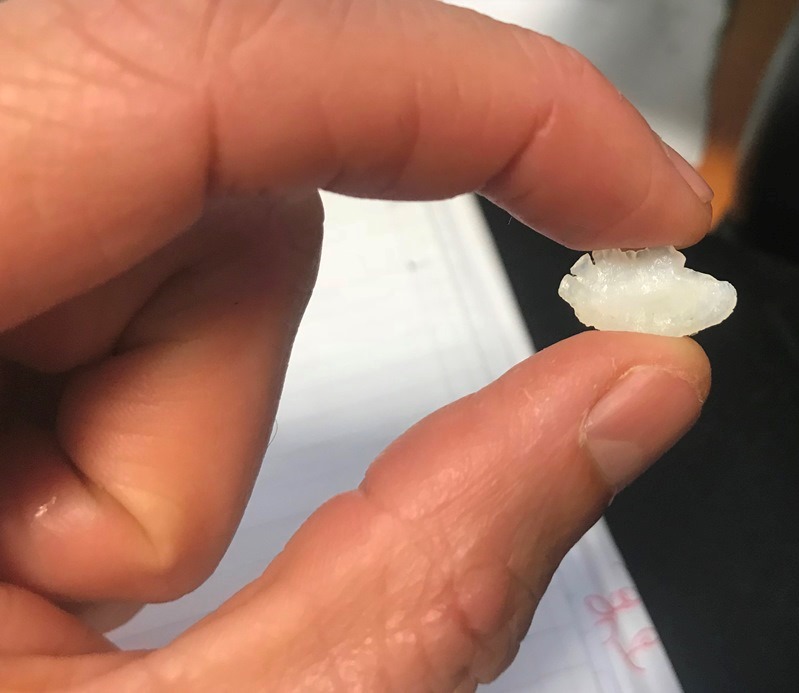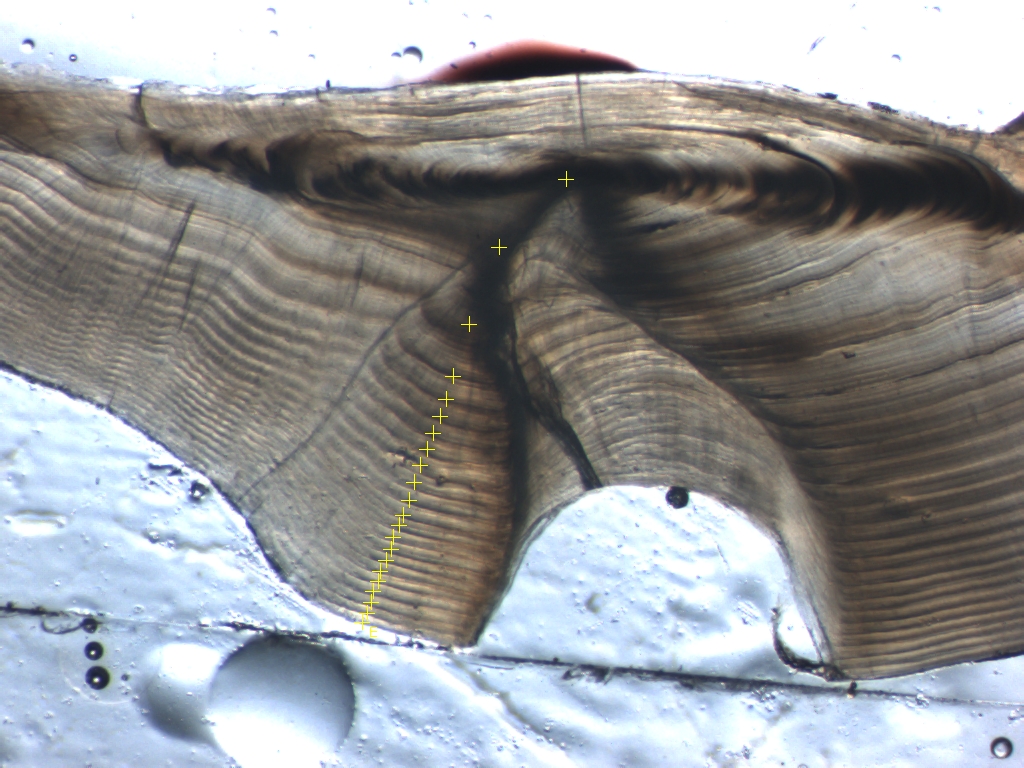A major research and monitoring program has been working with recreational fishers to collect certain parts of the fish they are catching for the dinner table. The Victorian Environmental Flows Monitoring and Assessment Program (VEFMAP) Stage 6 included a citizen science project to help us measure the benefits to fish of environmental watering events. VEFMAP is monitoring sites in northern Victoria, where water is being delivered into rivers to improve the migration, spawning and survival of recreational fish species such as Murray Cod and Golden Perch. Sites include the Goulburn, mid-Murray, Broken, Loddon and Campaspe rivers, and Pyramid and Gunbower creeks.
Our fish monitoring includes analysis of fish ‘ear bones’ (known as otoliths; people have them too) which are small calcium carbonate structures within a fish head that aid in balance and hearing. Amazingly, by looking at these small otoliths under a microscope, we can learn a great deal about the growth, age, origin and movement history of a fish. To collect enough samples, and rather than catching extra fish, we have tapped into the great resource of fishers. This means that we have used fish that fishers are already catching and keeping for eating, while also taking the opportunity to build people’s awareness of environmental watering and foster local stewardship in environmental rehabilitation.


Our citizen science project ran from early 2018 to December 2019, and we worked with a range of local fishers and fishing clubs, the Victorian Fisheries Authority, the North Central Catchment Management Authority and Goulburn Broken Catchment Management Authority to promote the project and seek interested participants. During this time, angler scientists collected 84 Golden Perch and 25 Murray Cod otoliths from 12 rivers, creeks and lakes in northern Victoria. These otoliths represented a valuable additional source to those obtained during VEFMAP fish monitoring, to contribute to our assessment of how fish respond to water for the environment. This project also provided an opportunity to increase awareness of VEFMAP and the benefits of environmental watering, and increase connections between scientists and fishers.
Particular highlights included:
- three Golden Perch born in the lower Darling/Murray junction were caught more than 1000km upstream in Murray River near Cobram East
- two Golden Perch born in the lower Darling/Murray junction region were caught more than 400km upstream in Murray River near Piambie
- a natural recruit of Murray Cod within the Campaspe River
- insights into the growth and survival of stocked Golden Perch in the Campaspe River.
The large-scale movements of Golden Perch, which have been observed in other monitoring studies, emphasise the need to manage and coordinate river flows for this species at large spatial scales. The evidence of natural recruitment of Murray Cod and strong growth of stocked Golden Perch are encouraging signs in support of the flow management within the Campaspe River.
Planning for VEFMAP Stage 7 will consider how to keep working with angler scientists to help assess how fish respond to water for the environment.
For more information contact: pam.clunie@delwp.vic.gov.au
The following fact sheets provides more detail on this project, including results:
- VEFMAP fact sheet - Fishers fishing for ear bones - Results and highlights (PDF, 361.6 KB)
(accessible version (DOCX, 1.5 MB)) - VEFMAP fact sheet - Fishers fishing for fish ear bones - Project overview (PDF, 383.9 KB)
(accessible version (DOCX, 2.1 MB))
A short video titled "What can fish ear bones tell us?" is available on the DELWP YouTube channel, and can also be viewed below:
Page last updated: 31/07/20